Nakayama is in between Narita And Haneda International Airport
<クッキーについての同意並び欧州居住者向けプライバシーポリシー>
中山・下総・散歩道
Honkakusan Jojuin Moshoji Temple in Ninoe

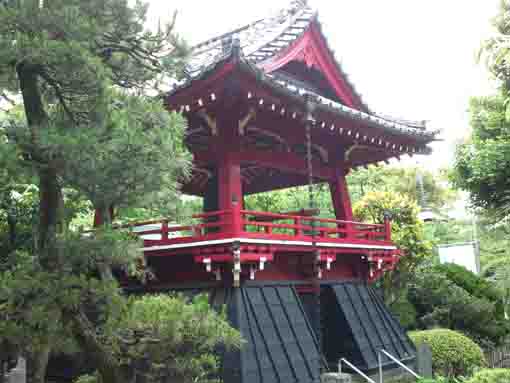


Honkakusan Jojuin Myoshoji Temple standing along Furukawa Water Park in Edogawaku was a noted old temple belonging to Nichiren Shu was introduced in Edo Meisho Zue (a guide book describing Edo published in Edo period). This temple has two mandalaes drawn by the second and third abbot of Nakayama Hokekyoji Temple, the venerable Nikko and Nichiyu, and it also has a portrait of the Founder Nichiren drawn by Mito Komon. According to Edo Meisho Zue, the statue of Nichiren it has was carved by the venerable Nichiyu, too.
Moreover, there are many kinds of trees planted in Myoshoji Temple and they bloom in every season and they decorate the garden beautifully. In spring, visitors could enjoy seeing cherry blossoms in Myoshoji Temple and the lined cherry trees along Furukawa Water Park in the same time. After that weeping cherry blossoms, azaleas and wisterias bloom to welcome the visitors. In fall, there are many beautiful colored leaves decorating the temple's garden. A large gingko tree in the temple could be seen from the highway.
Honkakusan Myoshoji Temple is a wonderful temple where seasonal flowers bloom in every season. Why don't you visit it?
Honkakusan Jojuin Myoshoji Temple
Honkakusan Jojuin Myoshoji Temple
Myoshoji Temple belonging to Nichiren Shu was a core temple of Nakayama Hokekyoji Temple had 14 branch temples and it named Honkakusan Jojuin. Neighbors love it and called it 'Joujin' or 'Kuromon Dere'.According to the record of the temple, a fisherman living in Ninoe Village helped a boy on a wrecked boat washed ashore in 1284, the boy was a descendant of Taira Family. He became a disciple of the venerable Nikko, the 2nd abbot of Nakayama Hokekyoji Temple. Later he became a priest of Buddhism named Jojuin Nissho and built a small hat beside a Myoken shrine near Furukawa River.
This was the beginning of this temple happened in March 1307.
紙本墨書大曼荼羅 (A large mandalas drawn in ink on a paper was registered as a cultural asset of Edogawaku)
According the record of Myoshoji Temple, these two mandalas had been donated by Gonuemon Utsui in Kojima in 1843, it was the ages when the 32nd chief priest, Nisshin was managing it. And he asked Nichido, the 101st abbot of Nakayama Hokekyoji Temple to analyze them and he gave a written statement of expert opinion that stated that they were drawn by the venerable Nikko and Nichiyu. The statement exists in Myoshoji Temple now.March 1991平成3年3月
Edogawaku Boad of Education
本覚山成就院妙勝寺門前案内板より
引用、抜粋並びに参考
本覚山成就院妙勝寺門前案内板
江戸名所図会6 ちくま学芸文庫
江戸川区ホームページ
市川市ホームページ
ウィッキペデイァ
The Beautiful Garden in Myoshoji Temple
Cherry Blossoms blooming in Myoshoji Temple



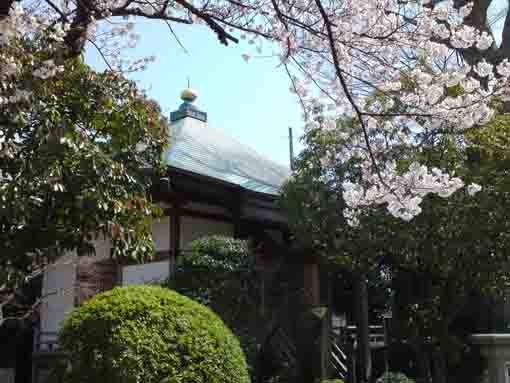






Colored Leaves in Myoshoji Temple


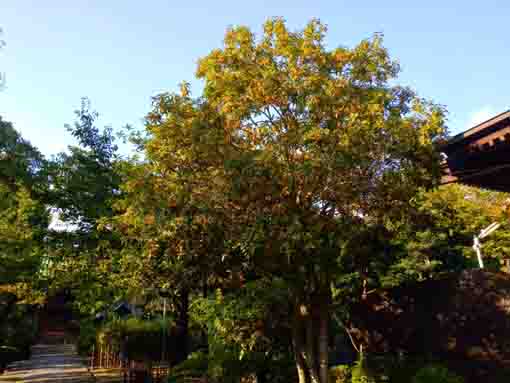








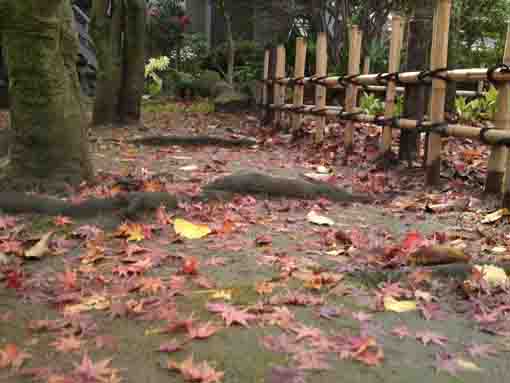

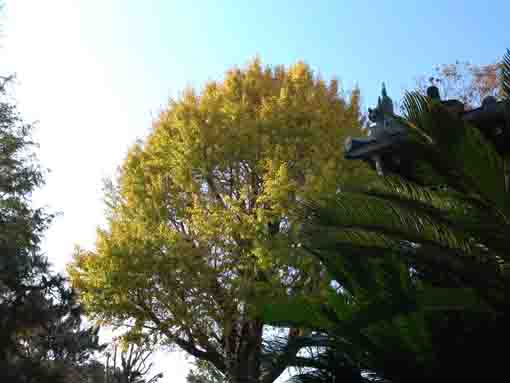
Landmarks near Honkakusan Jojuin Moshoji Temple

Furukawa Water Park
It is the first water park in Japan and a famous spot for viewing Sakura and hydrangeas.。
Ninoe Jinja Shrine
This shrine is very beautiful with many tall pine trees and a giant zelkova tree in it.
Kaishosan Rengeji Temple
The principle image is the statue of Sho Kanzeon Bosatsu carved by Gyoki.
Kumano Jinja Shrine
This shrine stands where famous and popular tasty water flows in the river.
Eichosan Josenin Chokoji Temple
It is called Akamondera dedicates Shichimen Daimyojin.The Location and Access to Honkakusan Jojuin Myoshoji Temple

The map of the noted spots along Furukawa Water Park and Kasai
The Map of the landmarks along Furukawa Water Park and in KasaiHonkakusan Jojuin Myoshoji Temple
- Honkakusan Jojuin Myoshoji Temple has great accessibilities from both Narita and Haneda International Airport.
- From Narita International Airport, take Sobu Express Line bound to Tokyo or Yokosuka and get off at Funabashi Sta, then transfer the line to Sobu line bound to Nakano or Mitaka ang get off at Motoyawata Sta. Or take Keisei-line bound to Ueno and get off Keisei Yawata Sta. Both from Motoyawata Sta and Keisei Yawata Sta, transfer the line to Toei Shinjuku line and get off at Ichinoe Sta.
- From Haneda International Airport, take Keikyu-line bound to Narita, and get off Shinagawa Sta and transfer the line to Sobu Express line bound to Narita International Airport or Chiba, and transfer the line at Ichikawa Sta to Sob line bound to Nishi Funabashi, Tsudanuma or Chiba and get off at Motoyawata Sta. Or take Keikyu-line bound to Narita, and get off Keisei Yawata Sta. Both from Motoyawata Sta and Keisei Yawata Sta, transfer the line to Toei Shinjuku line and get off at Ichinoe Sta.
- From Iwamotocho Station at Akihabara, take Toei Shijuku line bound to Motoyawata and get off Ichinoe Sta.
- Take 12 minute walk from Ichinoe Sta.
- 6-7-15 Edogawa, Edogawaku, Tokyo
The Noted Spots around Funabori, Ichinoe and Kasai

The Observatory on Tower Hall Funabori
Visitors could enjoy seeing some special views of Tokyo.
A Walk Along Shinkawa River
There are some Edo style, some wooden buildings and thousands of cherry trees along the river.
Thousands of Cherry Trees along Shinkawa River
In spring, thousands of sakura along it beautifully bloom.
Shinkawa Nishi Suimon Hiroba Plaza
There are a Edo style fire lookout and an old lock gate in the plaza.
Furukawa Water Park
It is the first water park in Japan and a famous spot for viewing Sakura and hydrangeas.
Honkakusan Myoshoji Temple
There are some seasonal flowers blooming in every season, sakura especially blooms beautifully.
Ninoe Jinja Shrine
There are several tall pine trees and a 500 years old giant zelkova tree in the shrine.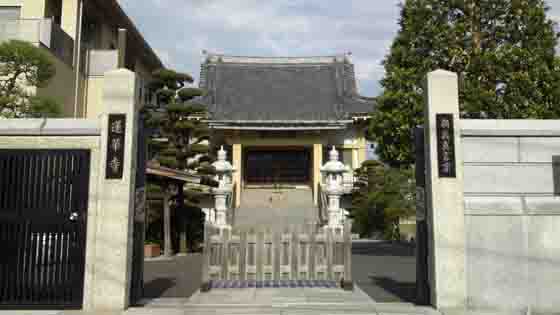
Kaishosan Rengeji Temple
The principle image is the statue of Sho Kanzeon Bosatsu carved by Gyoki.
Kumano Jinja Shrine
There is a stone tablet scribing a haiku poem written by Basho Matsuo.
The Remain of the Ferry at Imai
The ferryport at Imai is appeared on an essey written by Socho, a renga poet in Muromachi period.
Ichinoe Sakaigawa Water Park
The park has many sakura and seasonal flowers, visitors could enjoy all seasons.
Iousan Myouonji Temple
It has the legend 'the One-eyed Crucial Carps' telling the miracle power to cure eye diseases.
Ichinoe Makkotei Residence Park
In spring, weeping cherry trees bloom, in fall, colored leaves decorate the garden.
The Residence of Ichinoe Nanushi Yashiki
The traditional Japanese style residence with a thatched roof.
Honkosan Joryuji Temple
It is an important temple to know the history of Ichinoe area.
Chogyosan Daiunji Temple
It has tombs of Kabuki Yakusha and it is called Yakushadera.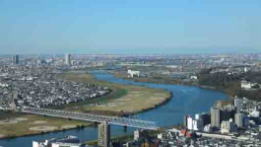
A Walk Along Edogawa River
The areas along the river have many noted spots that people could enjoy history and culture.
A Walk Along Shinnakagawa River
There are some historical and cultural spots along the river.- 広告 Advertisement -
